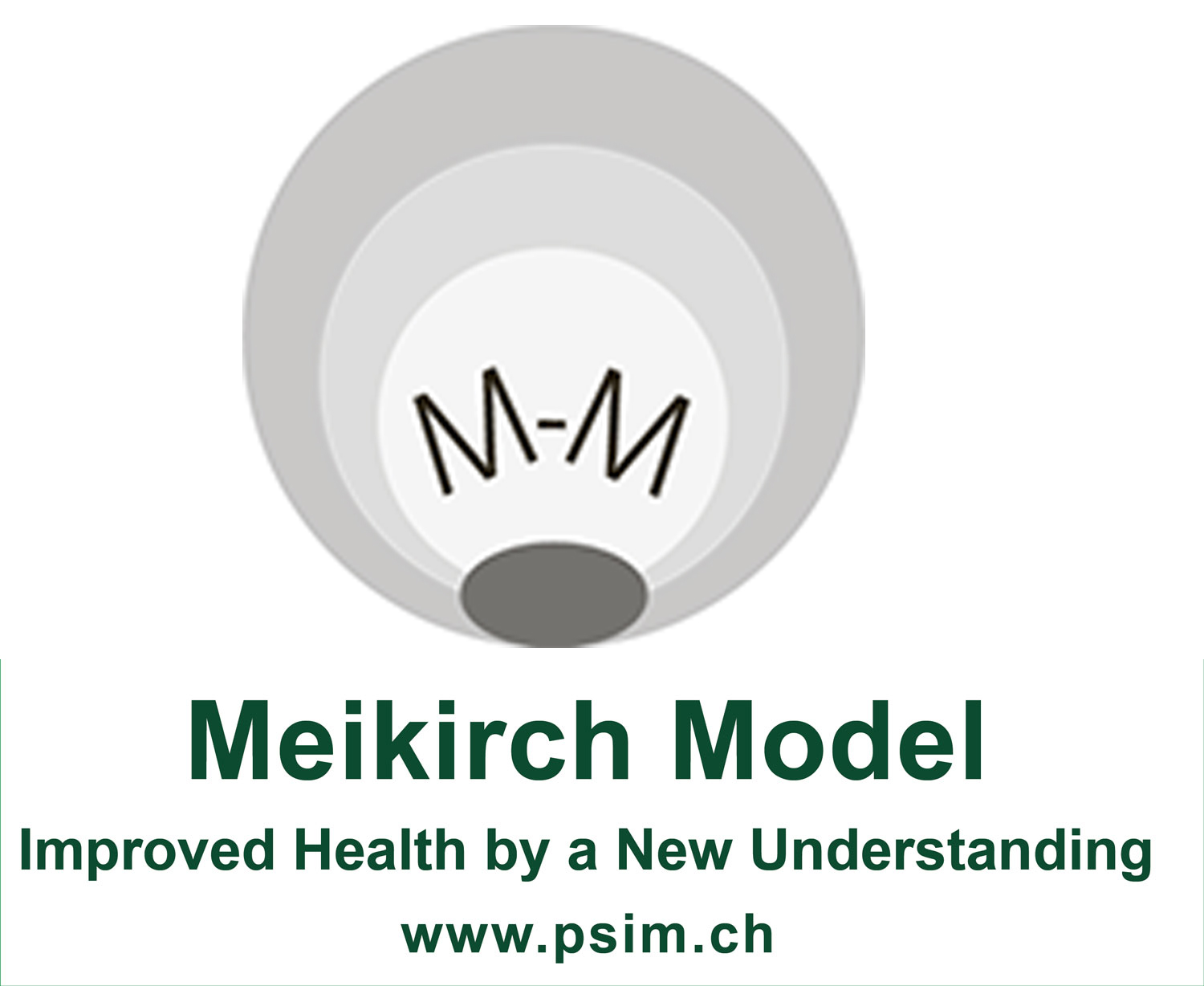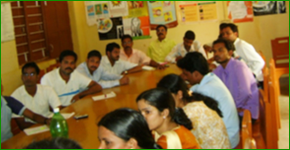 |
|
|
|
| MEIKIRCH MODEL |
|
| Introduction to the Meikirch Model |
|
The Meikirch Model is a comprehensive conceptual framework for understanding health as a complex adaptive system. It was developed by Dr. Johannes Bircher and Dr. Shyama Kuruvilla to provide a holistic understanding of health that goes beyond the traditional biomedical model. According to this model, health emerges from the dynamic interaction between five essential components that work together in a purposeful way.
|
|
| The Five Components of the Meikirch Model |
 The Meikirch Model conceptualizes health as emerging from the interaction of five key components:
The Meikirch Model conceptualizes health as emerging from the interaction of five key components:
- Demands of Life: The biological, psychosocial, and environmental challenges that individuals must navigate throughout their lives.
- Biologically-Given Potential: The innate physical and mental capacities we are born with, which form the foundation of our health.
- Personally-Acquired Potential: The knowledge, skills, attitudes, and resources we develop throughout life to manage health challenges.
- Social Determinants of Health: The societal structures, relationships, and support systems that influence health outcomes.
- Environmental Determinants of Health: The physical, chemical, and biological factors in our surroundings that affect our wellbeing.
When these five components interact in a balanced and purposeful manner, the result is good health. Conversely, when there is imbalance or dysfunction in any component, health is compromised.
|
|
| Implementation of the Meikirch Model in Odisha |
NYSASDRI has been at the forefront of implementing the Meikirch Model in various communities across Odisha. Our approach focuses on:
- Community awareness programs about the holistic nature of health
- Capacity building to enhance personally-acquired potential
- Strengthening social support systems and community networks
- Environmental conservation and protection initiatives
- Integration of traditional knowledge with modern health practices
Through village meetings, workshops, and training programs, we have successfully demonstrated how the Meikirch Model can be applied to improve health outcomes in diverse community settings.
|
|
| Community Empowerment through the Meikirch Model |
 One of the key strengths of the Meikirch Model is its emphasis on community empowerment. By understanding health as a complex system that they can influence, community members become active participants in their own health journey rather than passive recipients of healthcare services.
One of the key strengths of the Meikirch Model is its emphasis on community empowerment. By understanding health as a complex system that they can influence, community members become active participants in their own health journey rather than passive recipients of healthcare services.
Our programs have helped communities:
- Identify local health priorities and develop context-specific solutions
- Build resilience to health challenges through enhanced personal and community capacities
- Advocate for improved health services and environmental conditions
- Integrate traditional healing practices with modern medicine
- Develop sustainable health-promoting behaviors and environments
|
|
| Training and Capacity Building |
NYSASDRI conducts regular training programs to build capacity among community health workers, local leaders, and community members on applying the Meikirch Model in their daily lives and work. These trainings cover:
- Understanding the five components of the Meikirch Model
- Practical applications for improving individual and community health
- Integration with existing government health programs
- Monitoring and evaluation of health outcomes using the model
- Developing community-led health initiatives
Participants from diverse backgrounds including healthcare professionals, teachers, community leaders, and government officials have benefited from these capacity-building initiatives.
|
|
| Research and Documentation |
NYSASDRI has been actively involved in researching and documenting the application of the Meikirch Model in various contexts. Our research focuses on:
- Effectiveness of the model in improving health outcomes in rural communities
- Adaptation of the model to local cultural and environmental contexts
- Integration with traditional health knowledge and practices
- Policy implications for health system reform
- Scalability and sustainability of interventions based on the model
Our findings have been shared at national and international conferences, contributing to the global understanding of holistic approaches to health.
|
|
| Partnerships and Collaborations |
The implementation of the Meikirch Model in Odisha has been possible through strategic partnerships with various stakeholders:
- Government health departments and agencies
- Academic and research institutions
- International development organizations
- Community-based organizations
- Private sector partners
These collaborations have enabled us to develop comprehensive, multi-sectoral approaches to health that address all five components of the Meikirch Model.
|
|
| Success Stories and Impact |
The application of the Meikirch Model has led to significant improvements in health outcomes and community wellbeing in the areas where we work:
- Enhanced community awareness and ownership of health issues
- Improved health-seeking behaviors and utilization of health services
- Strengthened community support systems for vulnerable populations
- Better integration of traditional and modern health practices
- Increased community participation in health governance
- Improved environmental conditions that support health
These successes demonstrate the practical value of the Meikirch Model as a framework for understanding and improving health in diverse community contexts.
|
|
| Future Directions |
Looking ahead, NYSASDRI plans to expand the application of the Meikirch Model in several ways:
- Scaling up successful interventions to new geographic areas
- Developing digital tools for monitoring and evaluation
- Integrating the model into school health programs
- Strengthening partnerships with academic institutions for research
- Advocating for policy changes based on the model's principles
- Developing training materials for wider dissemination
Our vision is to make the Meikirch Model a cornerstone of community health initiatives across Odisha and beyond.
|
|
|
| |
| |